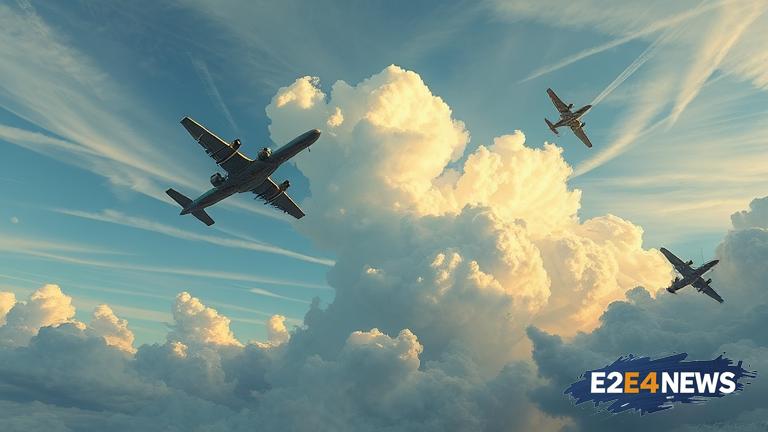The concept of controlling the skies has been a crucial aspect of modern warfare for decades. It refers to the ability of a military force to dominate the airspace over a battlefield, allowing them to conduct operations with greater freedom and effectiveness. This can be achieved through a combination of air superiority, air defense, and electronic warfare capabilities. In recent years, the importance of controlling the skies has only increased, as advances in technology have made air power more precise and lethal. The use of drones, precision-guided munitions, and advanced sensors has enabled military forces to conduct operations with greater accuracy and reduced risk. However, the ability to control the skies is not just about technology – it also requires effective tactics, techniques, and procedures. This includes the ability to integrate air power with ground and naval forces, as well as to adapt to changing circumstances on the battlefield. The history of warfare is filled with examples of the importance of controlling the skies, from the Battle of Britain to the Gulf War. In each of these conflicts, the side that controlled the skies was able to gain a significant advantage over their opponent. This is because air power allows a military force to project power over long distances, strike at enemy targets with precision, and gather intelligence on enemy movements and dispositions. Furthermore, controlling the skies can also have a significant impact on the morale of enemy forces, as the ability to conduct operations with impunity can be a significant psychological blow. In addition, the ability to control the skies can also be used to support ground and naval forces, providing them with close air support and reconnaissance. The use of air power has also been shown to be effective in a variety of different contexts, from counterinsurgency to conventional warfare. Despite the importance of controlling the skies, it is not without its challenges. The development of advanced air defense systems, such as surface-to-air missiles and anti-aircraft guns, has made it more difficult for military forces to achieve air superiority. Additionally, the use of cyber warfare and electronic warfare capabilities can also disrupt the ability of a military force to control the skies. Nevertheless, the importance of controlling the skies remains a key aspect of modern warfare, and military forces around the world continue to invest in air power capabilities. The United States, in particular, has a long history of investing in air power, and its military forces are widely regarded as among the most capable in the world. Other countries, such as China and Russia, are also investing heavily in air power capabilities, recognizing the importance of controlling the skies in modern warfare. In conclusion, controlling the skies is a crucial aspect of modern warfare, and military forces around the world continue to invest in air power capabilities. The ability to dominate the airspace over a battlefield can provide a significant advantage over enemy forces, and can be used to support a variety of different military operations. As technology continues to evolve, the importance of controlling the skies is likely to only increase, making it a key aspect of military strategy for years to come.



